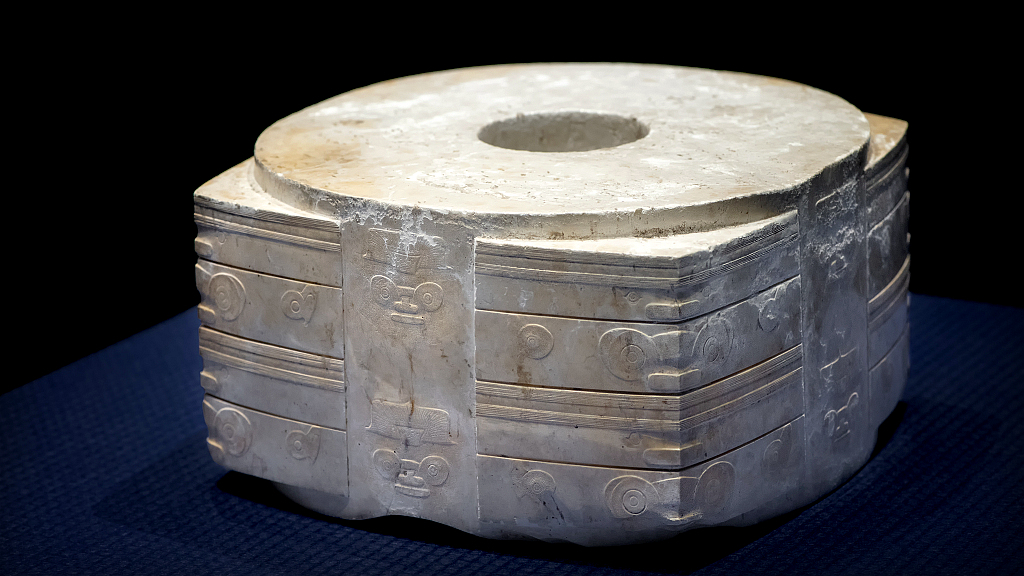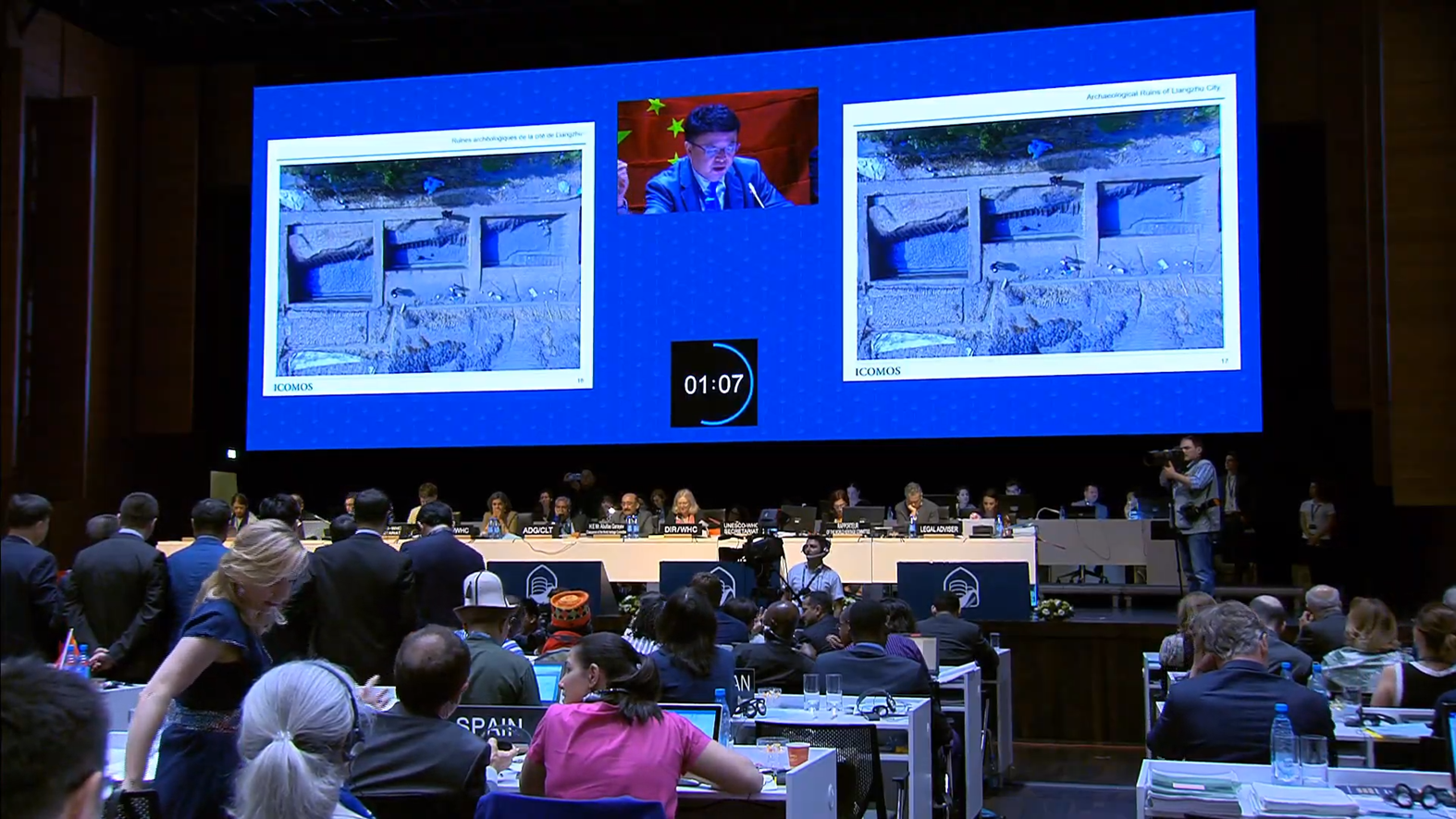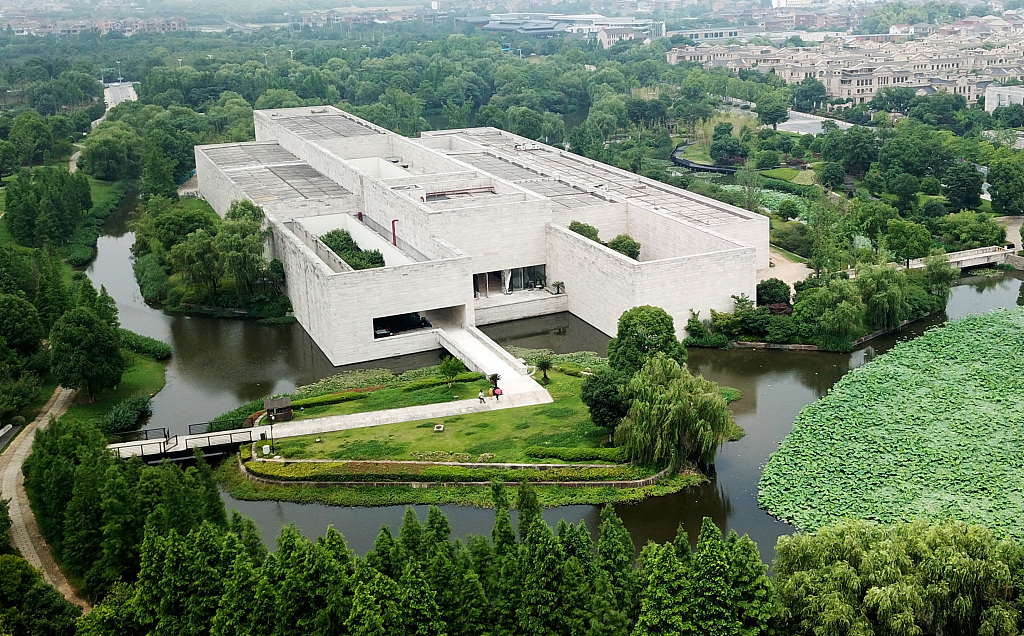Hendrik_2000
Lieutenant General
(cont)
Moreover, the discoveries of the city gates and waterway entrances linking the water network illustrate city planning and water conservation and harvesting infrastructure of the early period of Chinese civilization.
Equally exceptional are a large number of unearthed utensils used in manufacturing, household, military, and religious rituals.
Among them are exquisite jade wares with typical "deity and animal mask pattern" showing the peak of prehistoric jade-ware production and reflecting the ultimate level of jade carving in China in ancient times.

The Jade Cong, dubbed "Jade Cong King," weighs about 6,500 grams, wide and huge in size, and has a unique decoration pattern. /VCG Photo
The "Jade Cong King," a tubular vessel contained within a rectangular body, is widely considered the most representative cultural artifact as it showcases fine craftsmanship during the Liangzhu Culture period.
It is 8.8 centimeters in height and 17.6 centimeters in diameter, weighing 6,500 grams.
The site where the vestiges of religious and cultural artifacts were unearthed not only implies the existence of the largest ancient city of the late Neolithic Age in the lower reaches of the Yangtze River, but also exhibits the "supreme achievements" of agricultural civilization in the Yellow River and the Yangtze River basins – going back some 5,000 years.
Witness to generations of preservation efforts

A Chinese delegate delivers a speech after the Liangzhu Archaeological Site is declared as a World Heritage site by UNESCO's World Heritage Committee during its 43rd session in Baku, the capital of Azerbaijan, July 6, 2019. /Photo via UNESCO Live
Since initial excavation started in 1936, generations of Chinese archaeologists and scholars have made great efforts to explore the Liangzhu Archaeological Site and protect its heritage.
Named after the site in 1959, Liangzhu culture was universally recognized for its far-reaching influence. More than small-scale 100 archaeological sites scattered around the site had been unearthed by the late 1980s.
In 2007, some wall base relics of the ancient city were discovered, which then were confirmed to be the vestiges of the Liangzhu Ancient City, unfolding a mysterious picture of a city that remained obscured for nearly 4,000 years.

The Liangzhu Culture Museum is situated at the Liangzhu Archaeological Site in Hangzhou, east China's Zhejiang Province, June 25, 2018. /VCG Photo
One year later, the Liangzhu Culture Museum was established and opened to the public.
In 2013, China added the Liangzhu Archaeological Site to its Tentative List, preparing for the official nomination proposal to UNESCO.
Last year, the nomination of the property was submitted for evaluation to the World Heritage Center, which, earlier this year, put it on the shortlist for final selection at its annual meeting.
The committee's 43rd session continues until July 10.
Video edited by Zhao Yuxiang
Cover image designed by Zhang Xuecheng
Moreover, the discoveries of the city gates and waterway entrances linking the water network illustrate city planning and water conservation and harvesting infrastructure of the early period of Chinese civilization.
Equally exceptional are a large number of unearthed utensils used in manufacturing, household, military, and religious rituals.
Among them are exquisite jade wares with typical "deity and animal mask pattern" showing the peak of prehistoric jade-ware production and reflecting the ultimate level of jade carving in China in ancient times.

The Jade Cong, dubbed "Jade Cong King," weighs about 6,500 grams, wide and huge in size, and has a unique decoration pattern. /VCG Photo
The "Jade Cong King," a tubular vessel contained within a rectangular body, is widely considered the most representative cultural artifact as it showcases fine craftsmanship during the Liangzhu Culture period.
It is 8.8 centimeters in height and 17.6 centimeters in diameter, weighing 6,500 grams.
The site where the vestiges of religious and cultural artifacts were unearthed not only implies the existence of the largest ancient city of the late Neolithic Age in the lower reaches of the Yangtze River, but also exhibits the "supreme achievements" of agricultural civilization in the Yellow River and the Yangtze River basins – going back some 5,000 years.
Witness to generations of preservation efforts

A Chinese delegate delivers a speech after the Liangzhu Archaeological Site is declared as a World Heritage site by UNESCO's World Heritage Committee during its 43rd session in Baku, the capital of Azerbaijan, July 6, 2019. /Photo via UNESCO Live
Since initial excavation started in 1936, generations of Chinese archaeologists and scholars have made great efforts to explore the Liangzhu Archaeological Site and protect its heritage.
Named after the site in 1959, Liangzhu culture was universally recognized for its far-reaching influence. More than small-scale 100 archaeological sites scattered around the site had been unearthed by the late 1980s.
In 2007, some wall base relics of the ancient city were discovered, which then were confirmed to be the vestiges of the Liangzhu Ancient City, unfolding a mysterious picture of a city that remained obscured for nearly 4,000 years.

The Liangzhu Culture Museum is situated at the Liangzhu Archaeological Site in Hangzhou, east China's Zhejiang Province, June 25, 2018. /VCG Photo
One year later, the Liangzhu Culture Museum was established and opened to the public.
In 2013, China added the Liangzhu Archaeological Site to its Tentative List, preparing for the official nomination proposal to UNESCO.
Last year, the nomination of the property was submitted for evaluation to the World Heritage Center, which, earlier this year, put it on the shortlist for final selection at its annual meeting.
The committee's 43rd session continues until July 10.
Video edited by Zhao Yuxiang
Cover image designed by Zhang Xuecheng

